I gave the following talk at the Cebu Literary Festival in 2014 (produced by Hendri Go).
Cebu
As Inspiration to My Writings:
Talk
Given at the Cebu Literary Festival 2014
Cecilia
Manguerra Brainard
I’d like to start by talking about my Cebuano
background, because understanding this will allow you to see where some of my
writings came from.
My mother and her political family, the
Cuencos, are Cebuanos who have lived in Cebu for generations. I was born in
Cebu City after World War II, the youngest of four children. I grew up in my
parents’ home in Andres Abellana. I attended grade school in St. Theresa’s
College, where the nuns at the time wore layered white clothing with batman
headdresses.
Cebu life in the 1950s and 1960s was
different as compared to now. Cebu City seemed small and less hectic. There
were fewer people then and the traffic wasn’t bad. We went to school, returned
home for lunch, went back to school; and in the afternoons, we had time to
visit my mother’s relatives or friends for merienda, or they would visit us. We
would go on rides or paseo, to the pier for fresh air, and during these rides,
we usually made three stops: first was at the kiosk near the Santo Nino, where
my father would buy us Coca Cola and packs of M&Ms. Then we drove to the pier to stop by a bar-nightclub
called Slapsy Maxie’s. It was a seedy honky tonk establishment with colorful
girls hanging on to their temporary sailor boyfriends. We children stayed in my father’s red jeep,
while my parents would go down to talk to the owner of the place. I mention this because later on I would use
this experience in my first novel, When
the Rainbow Goddess Wept.
From Slapsie Maxie’s we drove to a
bakery to buy Pan Monay and Pan Frances.
By the time we arrived home, the gardener was usually gathering dried
leaves and branches to burn – daob – for
the dual purpose of getting rid of debris and driving away mosquitos.
In my early years, we did not have
television, and for entertainment my father read magazines and books. We
children played and also read books and comics. My mother was always busy supervising
the maids over household matters. After our afternoon rides, we did our
homework; my father used to help each one of us; he had been an engineering
professor at the UP, and so he carried this love for teaching over to us.
After my homework, I used to visit the
servants who stayed in a separate structure, the “dirty kitchen,” with an old
fashioned cooking hearth. It was fun
there. The servants would grate coconuts on an old-fashioned “cud-curan”, which you had to straddle; I
used to help. They would kill chickens, which was very dramatic. After the
heads of the chickens were cut off, the poor headless chickens ran about, with
blood spurting out of their necks, causing commotion in the kitchen.
The servants also listened to their
transistor radio, specifically to soap operas that were also very dramatic –
love stories, love triangles, out-of wedlock pregnancies and children, and so
on. Seated on a wooden bench, while all the cooking and activities were going
on, I would listen to the radio soaps and also to the advertisement jingles
urging us to buy Palmolive or Klim or Tanduay or Shioktong.
Sometimes I would catch a coconut
beetle, and imitating the other children, tie a string around the beetle’s neck
to swing it around – it sounds very
cruel now, but that’s what we did for amusement. The children would also play
with ants so the little creatures would fight each other to the death – all very cruel, but as I said, this was
pre-internet, pre-TV even.
By the time I went to high school in Manila,
there was television, and the lifestyle in Manila was different from Cebu.
Manila was a bigger city and more hectic than Cebu. That Manila experience
during high school and college was different from the time I lived in
Cebu. I should clarify that like many
other Cebuano kids who went to school in Manila, I used to return to Cebu
during vacations by airplane, DC-3, and sometimes the stewardess would announce
mid-air that we had to change seats to balance the airplane.
Even when I attended school in Manila,
Cebu remained magical during those holidays, where we kids went swimming and
had parties, and car rides, and there were many stories about which girls were
“fast” or “loose” and which boys were cute, and so on. By the time I was in college the Vietnam War
was going on, and the Americans had an air base in Mactan. Cebu used to be
inundated with American soldiers from that base, and there were also American
Peace Corps volunteers because they had headquarters in Cebu. I married one of
these volunteers.
I mention how it was then, because these
experiences, this world, found their way into my stories.
The fictive world I created was not
exactly Cebu. In fact, when I started writing and used “Cebu” as my setting, I
would freeze because I felt obliged to “tell the truth,” a difficult task when
one is telling a story. One day a long
time ago, while I was just doodling, I reversed the letters of “Cebu,” coining
the word “Ubec.” It felt really good; it gave me the freedom to use aspects of
Cebu and the characters I knew into my fiction without being bound to tell the
truth. I could lie, twist things around, use people I knew as models for my
fictive characters. I could even change the geography in Ubec.
There was another thing: I was
interested (and continue to be) in history. I wanted to know the history of
Ubec. I wanted to see the people, see the streets and houses of Ubec in my imagination
as well as in my writings. Some of my
short stories and my two novels are set in Ubec during historically significant
times. My first novel, for instance, When
the Rainbow Goddess Wept or Song of
Yvonne, is set during World War II in Ubec and Mindanao. I was born after
the war, but my protagonist, who in my imagination is a bit like me when I was
a child, had to experience the war with her parents, who are patterned after my
own parents. Many stories that my parents had told me, or that I overheard
because I must have been a nosy kid after all, made their way into that novel –
how they knew a doctora who was
hacked up by the Japanese for instance, how they had to hide radios or else be
killed if caught, how they had to flee to Mindanao so Nando could join the
guerrilla movement.
My second novel, Magdalena, is a story about three generations of women whose lives
were affected by historical events – the Philippine American War, World War II,
and the Vietnam War. Ubec features in this novel as well.
My short stories include what I call
historical fiction, a group of inter-related stories set during the turn of the
century. The first one I wrote was “Woman With Horns,” a story about a grieving
American doctor, Dr. Gerald McAllister, who is in Ubec and who meets Agustina,
a flirtatious widow. Agustina, a woman who reportedly has horns (inspired by a
Cebuana who was rumored to have horns) helps him in his healing; she teaches
him how to live again.
I have a story entitled “The Blue Green
Chiffon Dress” which is about a teenage girl who meets an American soldier
during one of those Ubecan summer holiday parties, and who is kissed for the
first time.
A local personality inspired the story
entitled “Alba,” only I fictionalized Alba as a healer in Malate in 1763, after
the brief British occupation of Manila.
There is the story of the nine-year-old
Remedios whose father died, just as my own father died when I was nine
A popular story of mine is “Flip Gothic”
which is about a teenage FilAm girl who is dispatched by her parents to her
grandmother in Ubec where the girl learns more about her identity.
I have many other stories inspired by
Ubec and Ubecans.
I also wrote essays about Cebu, my own
experiences as well as articles about my mother and her Cuenco family have been
favorite topics.
My current novel in progress is set,
yes, in Ubec once again.
Cebu, you see, is a very interesting
place. I have lived in Manila and in California, and I have visited many places
all over the world, but Cebu shines in my heart and in my imagination.
Let me tell you about the young man I
saw the other day, here in Cebu. He was with some other women, but his shoes
caught my eye. They were animal shoes – one shoe looked like a cheetah, the
other a tiger, and he walked along with the other ladies as if it were
perfectly normal to have animal shoes. He apparently stitched the shoes
himself.
With his permission, I took and posted
his pictures in my blog. He reminded me of why I find Cebu fascinating – young men
wearing animal shoes, women said to have horns, some other woman reputed to be
a witch, love affairs, out of wedlock children – it’s like those soap operas I
was fascinated with when I was a child.
Cebu’s uniqueness, richness, funkiness,
humanity, and most of all its people have inspired many of my writings, and I
am grateful for this.
~end~
Bio: Cecilia Manguerra Brainard was born
and raised in Cebu City. She is the author and editor of nineteen books,
including the internationally-acclaimed novel, When the Rainbow Goddess Wept.The multi-awarded author has been
widely anthologized and her work has been translated into Finnish and Turkish.
She has a website at <http://www.ceciliabrainard.com>.
Tags: writer, novelist, fictionist, Filipino #Cebu #literature #Philippines
Read also
Women and My Writing by Cecilia Brainard
Read also
Women and My Writing by Cecilia Brainard







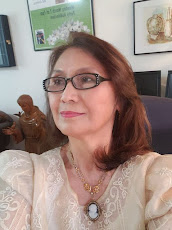

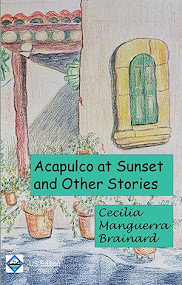



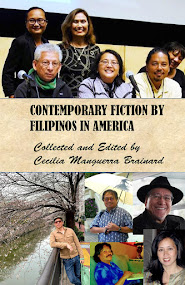
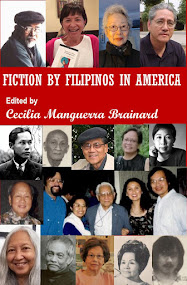



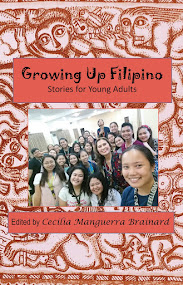
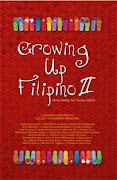


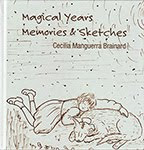


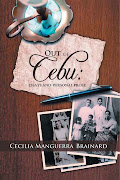

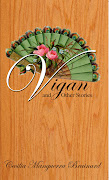

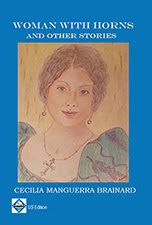

No comments:
Post a Comment